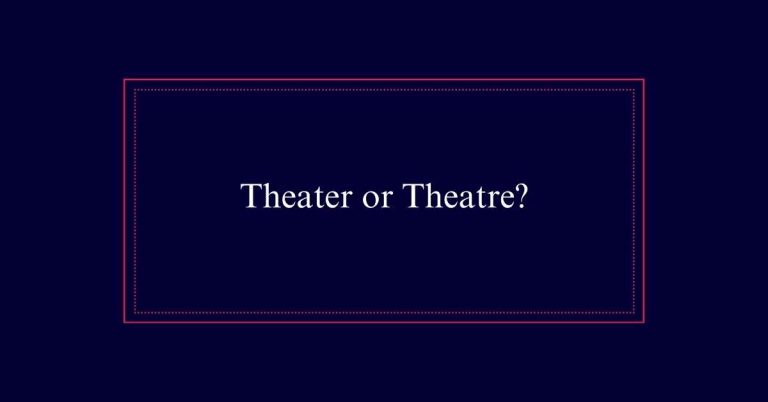Quotation Marks and Dialogue
Quotation marks are essential for writing dialogue, encapsulating speech, and ensuring grammatical accuracy. In American English, double quotes are standard, with periods and commas placed inside the closing quotation marks. Each new speaker’s dialogue begins a new paragraph to maintain clarity.
Question marks and exclamation points are placed inside the quotation marks if they are part of the quote. Proper dialogue punctuation, including commas before dialogue tags and appropriate end punctuation, enhances readability.
American Vs. British Quotation Marks
Understanding the differences between American and British quotation marks is crucial for clear and accurate writing. In American English, double quotation marks are used for quotes, while British English prefers single quotation marks.
Another key distinction involves the placement of periods and commas. American English places these punctuation marks inside the closing quotation marks. Conversely, British English positions them outside unless they are part of the quoted material.
These guidelines guarantee that quotations are correctly punctuated and understood within their respective dialects. Adhering to these conventions not only maintains grammatical accuracy but also helps avoid confusion for readers who may be familiar with one style over the other.
Rules for Dialogue Punctuation
Correctly punctuating dialogue is essential for clear and engaging storytelling. Proper punctuation guarantees that readers can follow conversations and understand the flow of the narrative.
Here are four key rules to remember:
- End punctuation: Periods and commas should always be placed inside the closing quotation marks.
- Dialogue tags: When a dialogue tag follows the quote, use a comma inside the quotation marks before the tag.
- Exclamation and question marks: These should be placed inside the quotation marks if they are part of the quoted material.
- Interrupted dialogue: When a dialogue is interrupted by a tag, use commas inside the quotation marks on both sides of the interruption.
Starting New Paragraphs in Dialogue
When multiple characters are conversing, start a new paragraph each time a different character speaks. This practice helps readers follow the dialogue and understand who is speaking.

Each new paragraph should begin with an opening quotation mark and end with the appropriate punctuation inside the closing quotation mark. Even if a character speaks only one word, a new paragraph is necessary. This rule guarantees clarity and improves the readability of the text.
Additionally, maintaining this structure avoids confusion and makes the conversation flow naturally. Proper paragraphing in dialogue is essential for effective communication and helps convey the intended tone and pace of the conversation.
Exclamation and Question Marks in Dialogue
Exclamation and question marks in dialogue must be placed inside the quotation marks to guarantee proper punctuation and clarity. This rule safeguards that the sentence is grammatically correct and easily understood.
When writing dialogue, it is important to follow these guidelines:
- Direct Questions: Place the question mark inside the quotation marks. For example: ‘Are you coming to the party?’
- Direct Exclamations: Place the exclamation mark inside the quotation marks. For example: ‘Watch out!’
- Mixed Punctuation: When a sentence ends with dialogue that includes a question or exclamation, the mark stays within the quotation marks.
- Punctuation Placement: Ensure that the punctuation inside the quotation marks does not disrupt the sentence’s meaning.
Dialogue Tags and Punctuation
Understanding how dialogue tags influence punctuation is crucial for clear and professional writing.
Dialogue tags, such as ‘he said’ or ‘she asked,’ dictate where punctuation marks should be placed. In American English, periods and commas always go inside the closing quotation marks. For example, “I’m coming,” she said.
If the dialogue ends with a question or exclamation, the punctuation goes inside the quotation marks before the tag: “Are you ready?” he asked.
When a dialogue tag interrupts a sentence, commas separate the tag from the dialogue: “I’m not sure,” he said, “if I can go.”
Punctuation in Non-dialogue Quotes
Proper punctuation in non-dialogue quotes is essential for maintaining clarity and coherence in writing. When quoting text within a sentence, punctuation marks should be placed correctly to avoid confusion. Here are four key rules to follow:
- Periods and commas: In American English, place periods and commas inside the quotation marks. In British English, they go outside.
- Question marks and exclamations: Place these inside the quotation marks if they are part of the quoted material. Otherwise, place them outside.
- Colons and semicolons: Always place these outside quotation marks, regardless of the quotation style.
- Capitalization: Make sure the quoted text fits grammatically within your sentence. Adjust capitalization if necessary.
Constructing Sentences With Quotes
Applying proper punctuation to non-dialogue quotes is just the first step; constructing sentences with quotes requires careful integration to maintain flow and coherence.
When embedding a quote, guarantee it fits grammatically within the sentence. For example, ‘The researcher noted that ‘the results were inconclusive,” seamlessly integrates the quote.
Use introductory phrases like ‘according to’ or ‘as stated by’ to provide context. Make certain the sentence remains clear and concise. Avoid breaking the reader’s flow with abrupt or awkward phrasing.
Avoiding Tense and Person Switches
Maintaining consistency in tense and person is essential to guarantee smooth and coherent writing. Abrupt shifts can confuse readers and disrupt the narrative flow. To avoid these pitfalls, consider the following guidelines:
- Establish a clear tense: Decide whether past, present, or future tense suits your narrative and stick with it.
- Maintain person consistency: If you start in the first person, avoid switching to the second or third person without a clear reason.
- Review dialogue carefully: Make sure characters’ speech aligns with the established tense and person.
- Edit meticulously: Revisit your text to catch inadvertent switches that might have slipped through.
Appropriate Use of Scare Quotes
Scare quotes can signal skepticism or irony when used around specific terms or phrases. They serve to distance the writer from the quoted words, suggesting that the terms are being used in a non-standard, questionable, or sarcastic manner.
For example, placing scare quotes around ‘expert’ can imply doubt about the person’s qualifications. However, overuse of scare quotes can confuse or irritate readers, making the text seem overly cynical or unclear.
It is important to utilize scare quotes sparingly and only when there is a distinct need to highlight the unconventional or disputed nature of the term. This guarantees that the writing remains professional and the intended message is conveyed effectively.






